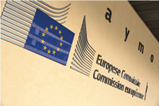The Standards Board for Alternative Investments (SBAI) has published guidance on incorporating derivatives and short positions in greenhouse gas (GHG) emission calculations and reporting.
The framework outlines the case for inclusion of derivatives and short positions both from the perspective of measuring GHG emissions risk exposure and of supporting real-world emissions reductions through impacts on market price formation.
Mario Therrien, SBAI chair and head of investment funds and external management at CDPQ in Canada, said: “Responsible investment has been an area of focus at the SBAI for several years now, and we are delighted to continue to bring the debate forward with our community of alternative investment managers and investors on how best to expand GHG-emission reporting beyond the long-only world of traditional investments.”
Priti Singh, SBAI trustee and global head of capital markets and factor investing at CPP Investments, added: “We believe that more comprehensive disclosure of climate-related metrics by managers is critical in helping investors make better informed decisions, and we are supportive of initiatives like this to standardise reporting.”
The role of derivatives in emissions accounting has been highly debated, in particular the role of short-selling in furthering emissions reductions in the real world. The EU has moved to exclude derivatives from sustainable strategies.
In its new guidance, the SBAI backs the notion that short-selling, in aggregate, can have a real-world impact by way of influencing companies’ cost of capital, proposing that investors calculate an “endorsed emissions” metric to measure GHG-emission risk as well as impact through the transmission channel of companies’ cost of capital.
“Further academic research will help clarify the magnitude of impact in the future”
Standards Board for Alternative Investments (SBAI)
The SBAI uses “endorsed emissions” instead of the “financed emissions” term widely used in net zero accounting frameworks because it considers the latter may be misleading regarding the relationship to real-world emission reductions.
Alternative metrics
However, the SBAI said that “impact can vary as a function of circumstances” and that some of the working group responsible for the guidance raised criticism because they were “not convinced that the cost of capital mechanism is strong enough”.
“Further academic research will help clarify the magnitude of impact in the future,” the SBAI guidance paper stated.
It also revealed that the SBAI responsible investment working group discussed an alternative approach to allocating carbon on the basis of risk exposure to an economic activity, namely on the basis of “control”.
“When investors deploy these strategies and invest in alternative vehicles, they should do so whilst being fully transparent when disclosing GHG-emissions”
Toby Belsom, director of guidance at the Principles for Responsible Investment
The SBAI’s report also proposed that investors may wish to calculate a metric capturing their “potential to impact”, for example through their ability to vote or, for those providing new cash funding in primary markets, a measure of their primary funding for green or brown companies (in 2021, researchers at University of Oxford proposed Primary Market Carbon Exposure (PMCE) as a new metric to track and manage transactions that are channelling capital flows directly into fossil fuels).
For non-equity holders engaging through mechanisms such as public engagement or collaboration with other investors, the SBAI said it encouraged qualitative disclosure of the activities in question.
At the Principles for Responsible Investment (PRI), director of guidance Toby Belsom said that when investors deploy strategies other than investing in long-only cash equities “they should do so whilst being fully transparent when disclosing GHG-emissions related to portfolios and investees”.
“This includes being clear about which metrics and measures they use to record progress on reducing GHG-emissions, how they engage, and how they work towards sustainability outcomes,” he added.
More asset classes
The SBAI’s carbon footprinting framework was developed by the body’s responsible-investment working group, which brings together practitioners from leading institutional investors and alternative investment managers from around the globe.
The guidance builds on existing frameworks, such as that developed by the Taskforce on Climate-related Financial Disclosures and the Partnership for Carbon Accounting Financials.
The asset classes covered are listed and unlisted equity, corporate bonds and business loans, project finance, commercial real estate, mortgages, motor vehicle loans, and sovereign debt.
Work on potential guidance for other assets, including commodities and insurance-linked funds, is on the agenda.
Looking for IPE’s latest magazine? Read the digital edition here






















No comments yet